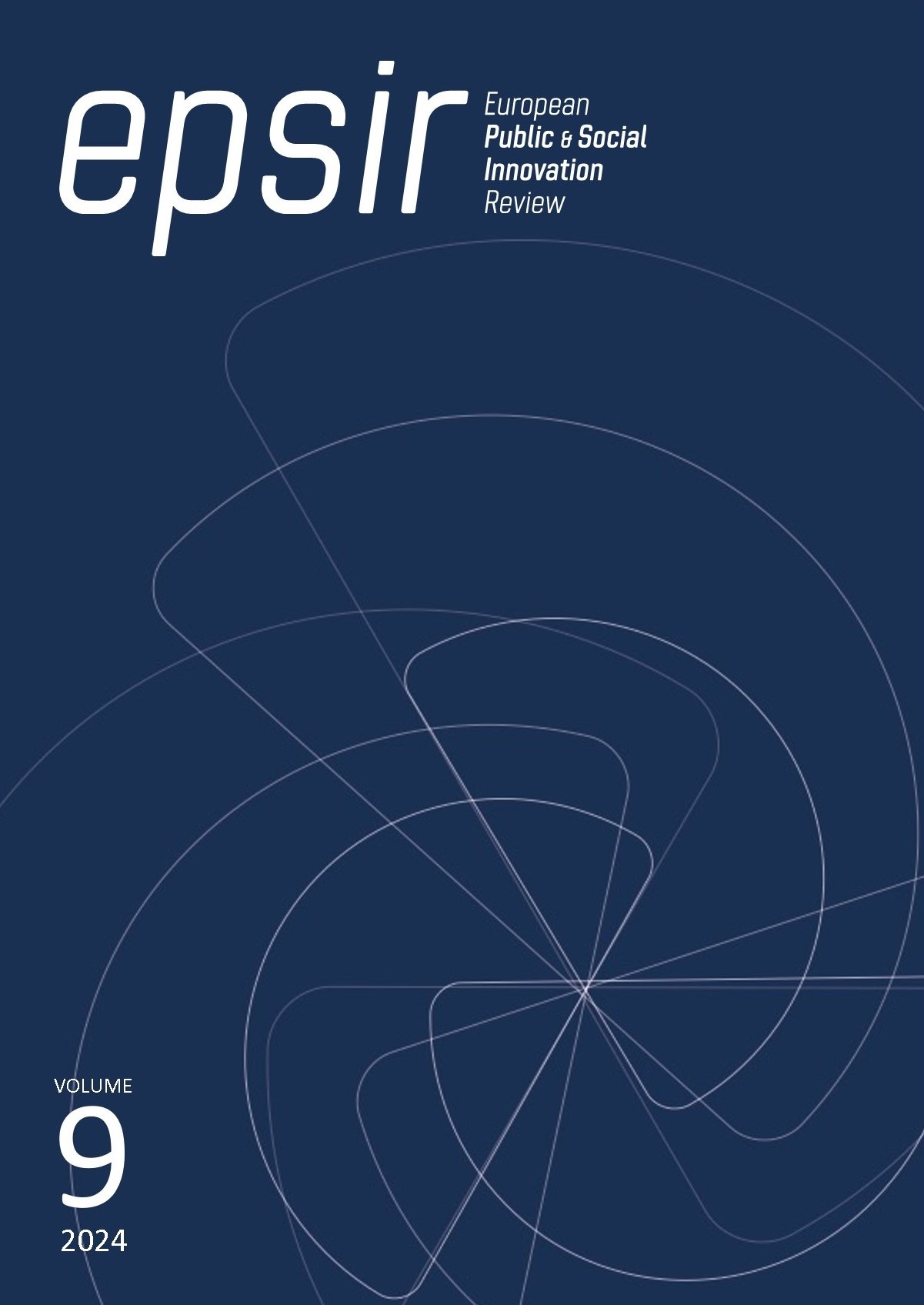Educational technology and interactive online maps to promote sustainable mobility and school routes
DOI:
https://doi.org/10.31637/epsir-2024-931Keywords:
Sustainable mobility, School routes, Interactive maps, Urban development, Traffic safety, Children's autonomy, Community engagement, Educational technologyAbstract
Introduction: the research aims to create safe spaces for children on their way to school. Environmental sustainability is a critical issue in current urban development, and this study seeks to address it comprehensively. Methodology: mobility patterns were identified, and opinions were collected through questionnaires administered to families. These data were essential for designing educational, technological, and urban actions in collaboration with educational centers, family associations, and local administration. Interactive online maps were developed using uMaps and Open Street Maps, accessible and collaborative tools that highlight safe school routes and conflict areas. Results: the collected data and resulting maps serve as references, helping to identify dangerous zones and implement traffic safety measures. Discussion: the results indicate that interactive maps help improve safety and foster collaboration to achieve sustainable mobility. Additionally, they promote children's autonomy and create a sense of community belonging. Conclusions: interactive online maps have demonstrated the benefits of safe school routes, involving citizens in creating safer and more sustainable educational environments and improving road safety in the school community.
Downloads
References
Ares, P. y Risler, J. (2015). Manual de mapeo colectivo: Recursos cartográficos críticos para procesos territoriales de creación colaborativa. Tinta Limón. https://iconoclasistas.net/4322-2
Augé, M. (1993). Los no lugares: Espacios del anonimato: Una antropología de la sobremodernidad. Gedisa.
Asociación Internacional de Ciudades Educadoras. (2020). Carta de las ciudades educadoras. https://www.edcities.org/wp-content/uploads/2020/11/ES_Carta.pdf
Banister, D. (2008). The sustainable mobility paradigm. Transport Policy, 15(2), 73-80. https://doi.org/10.1016/j.tranpol.2007.10.005 DOI: https://doi.org/10.1016/j.tranpol.2007.10.005
Bradbury, H. (Ed.). (2015). The SAGE handbook of action research (3ª ed.). SAGE. DOI: https://doi.org/10.4135/9781473921290
Caride, J. A. (2015). La educación ambiental en la práctica: Fundamentos, propuestas y experiencias. Morata.
Clean Cities International. (2022). Clean Cities Campaign. https://www.cleancitiescampaign.org
Díaz, R. (2009). Educación expandida: la Red como fuente de conocimientos. Periférica Internacional. Revista Para El análisis De La Cultura Y El Territorio, 1(10), 196-205. https://doi.org/10.25267/Periferica.2009.i10.18 DOI: https://doi.org/10.25267/Periferica.2019.i11.18
¿Educa la ciudad? (2007). Participación Educativa, 6, 2-158. http://surl.li/uphxu
Gil-Mediavilla, M. (2023). Tecnología y sostenibilidad urbana. Hacia la consecución del ODS 11. Cuadernos de Pedagogía, 544, 121-126.
Google LLC. (s.f.). Google Forms (Versión actual) [Software en línea]. https://forms.google.com/
Idoiaga Mondragón, N., Legorburu Fernández, I., Alonso Sáez, I. y Berasategi Sancho, N. (2024). La movilidad independiente infantil en los caminos escolares: la percepción de los niños y niñas sobre las dificultades en su entorno. Revista sobre la infancia y la adolescencia, 26, 1-17. https://doi.org/10.4995/reinad.2024.16650 DOI: https://doi.org/10.4995/reinad.2024.16650
Laitón González, L. A. (2023). Cartografía social y ecocrítica como procesos significativos en educación ambiental. Una experiencia en torno al agua. Revista Internacional de Pedagogía e Innovación educativa, 3(2), 168-182. https://doi.org/10.51660/ripie.v3i2.114 DOI: https://doi.org/10.51660/ripie.v3i2.114
Lefebvre, H. (2013). La producción del espacio. Capitán Swing.
Ley Orgánica 3/2020. Por la que se modifica la Ley Orgánica 2/2006, de 3 de mayo, de Educación. 29 de diciembre de 2020. Boletín Oficial del Estado, No. BOE-A-2020-17264. https://www.boe.es/eli/es/lo/2020/12/29/3
Ley Orgánica 2/2023. Del Sistema Universitario. 22 de marzo de 2023. Boletín Oficial del Estado, No. 2. https://www.boe.es/eli/es/lo/2023/03/22/2
Martínez-Valderrey, V. y Alguacil Sánchez, S. (2023). Los caminos escolares hacia la autonomía infantil. Cuadernos de Pedagogía, 544, 85-92.
Microsoft Corporation. (2018). Microsoft Excel (Versión 16.0) [Software de hoja de cálculo]. Microsoft. https://office.microsoft.com/excel
Ministerio para la Transición Ecológica y el Reto Demográfico. (2015). IV Seminario de Movilidad e Infancia. http://surl.li/amduak
OSM Foundation. (2017). OpenStreetMap [Aplicación en línea]. Open Database License (ODbL 1.0). https://www.openstreetmap.org/
Teachers for the Future Spain. (2020). Metrominuto escolar. https://teachersforfuturespain.org/metrominuto/
Tejedor Mardomingo, M. y Ruiz Ruiz, E. (2023). Habitar la escuela desde sus entornos. Cuadernos de Pedagogía, 544, 72-78.
Tejedor Mardomingo, M., Gil-Mediavilla, M., Alguacil Sánchez, S. y Martínez Valderrey, V. (2023). Mapa de caminos escolares de la ciudad de Palencia. https://umap.openstreetmap.fr/es/map/caminos-escolares-de-palencia_938591
Tonucci, F. (1997). La ciudad de los niños. Un nuevo modo de pensar la ciudad. Losada.
Contribuidores de uMAP. (s.f.). uMAP [Aplicación en línea]. https://umap.openstreetmap.fr
Villasante, T. R. (2023). Methodologies for Transductive Strategies. En J. Zabalo, I. Filibi y L. Escajedo San-Epifanio (Eds.), Made-to-Measure Future(s) for Democracy? (pp. 285-306). Springer. https://doi.org/10.1007/978-3-031-08608-3_15 DOI: https://doi.org/10.1007/978-3-031-08608-3_15
Downloads
Published
How to Cite
Issue
Section
License
Copyright (c) 2024 Manuel Gil Mediavilla, María Tejedor Mardomingo, Sonia Alguacil Sánchez, Vanesa Martínez Valderrey, María Elena Ruiz Ruiz

This work is licensed under a Creative Commons Attribution-NonCommercial-NoDerivatives 4.0 International License.
Authors who publish with this journal agree to the following terms:- Authors retain copyright and grant the journal right of first publication with the work simultaneously licensed under Creative Commons Non Commercial, No Derivatives Attribution 4.0. International (CC BY-NC-ND 4.0.), that allows others to share the work with an acknowledgement of the work's authorship and initial publication in this journal.
- Authors are able to enter into separate, additional contractual arrangements for the non-exclusive distribution of the journal's published version of the work (e.g., post it to an institutional repository or publish it in a book), with an acknowledgement of its initial publication in this journal.
- Authors are permitted and encouraged to post their work online (e.g., in institutional repositories or on their website) prior to and during the submission process, as it can lead to productive exchanges, as well as earlier and greater citation of published work (See The Effect of Open Access).
Funding data
-
Fundación General Universidad de Valladolid
Grant numbers 12.314,06



